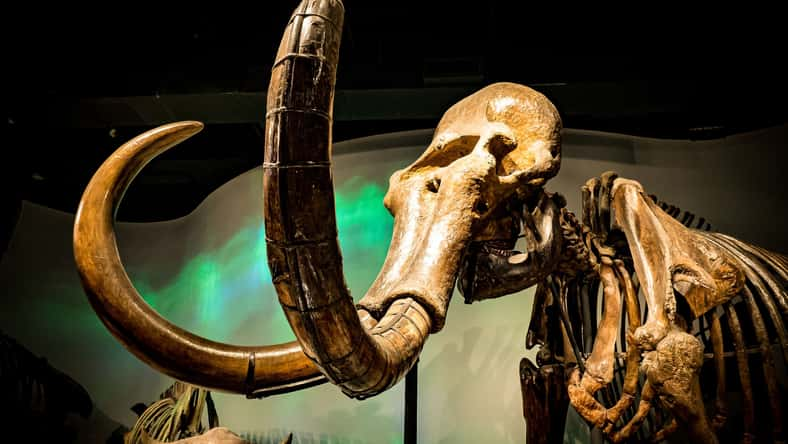A Fossil Hunter In Mississippi Stumbled Upon A Large Intact Columbian Mammoth Tusk Sticking Out Of A Mud Bank, A Rare First Find In The State

While wading through about three feet of water in a Mississippi creek, fossil hunter and collector Eddie Templeton ran into a large intact mammoth tusk that was sticking out of the mud bank. He had been on one of his regular hunts in rural Madison County when he stumbled upon the prehistoric treasure.
Since he was a kid, Templeton had been searching Mississippi creek banks for cool finds. Over the years, he has unearthed several fossils belonging to extinct mammals, including a saber-toothed cat, a mastodon, and a giant armadillo relative.
However, his latest discovery has been the most unexpected of them all. The tusk is thought to have come from a Columbian mammoth (Mammuthus columbi), a distant relative of the woolly mammoth.
Remains of the animal are rarely found in Mississippi. It is the first time that an intact tusk from this species has been uncovered in the state.
Once Templeton recognized the fossil as a tusk, he notified state scientists and experts from the Mississippi Museum of Natural Science of the find.
“It didn’t occur to me it could be a mammoth tusk instead of a mastodon tusk until later. When I learned it was a mammoth and not a mastodon, I got even more excited,” said Templeton. “I always hoped to find a part of a mammoth, but that’s pretty rare down here.
The Columbian mammoth tusk was seven feet long. Columbian mammoths were one of three types of Proboscideans—a group consisting of elephants and their extinct relatives—to roam Mississippi during the ice age. The other two were the mastodon and the gomphothere.
Each of these creatures had tusks. But mastodons were the most common in the region because they could live in a more diverse range of environments. Mammoths typically inhabited open prairies and grasslands.
Columbian mammoths stood about 15 feet tall and weighed more than 10 tons. They were larger than the woolly mammoth, which lived farther north. They ate leaves, grasses, and flowers. The animals lived during the end of the Pleistocene Epoch, making the newfound tusk anywhere from 11,700 to 75,000 years old.

schusterbauer.com – stock.adobe.com – illustrative purposes only
Columbian mammoths died out roughly 11,000 to 13,000 years ago. Woolly mammoths outlived them by around 6,000 years.
The tusk was strongly curved. Two tusks would’ve come close to making a complete circle. According to the Mississippi Department of Environmental Quality, this trait helped researchers figure out that the tusk was from a mammoth and not a mastodon.
Templeton and a team of field scientists dug out the tusk by hand. The team also placed aluminum foil around it and covered it with white plaster to protect the fossil during extraction and transportation.
The tusk weighed 600 pounds with its plaster coating. Currently, it is at the Mississippi Museum of Natural Science, where it will be studied closely and treated for preservation.
Sign up for Chip Chick’s newsletter and get stories like this delivered to your inbox.
More About:Animals





